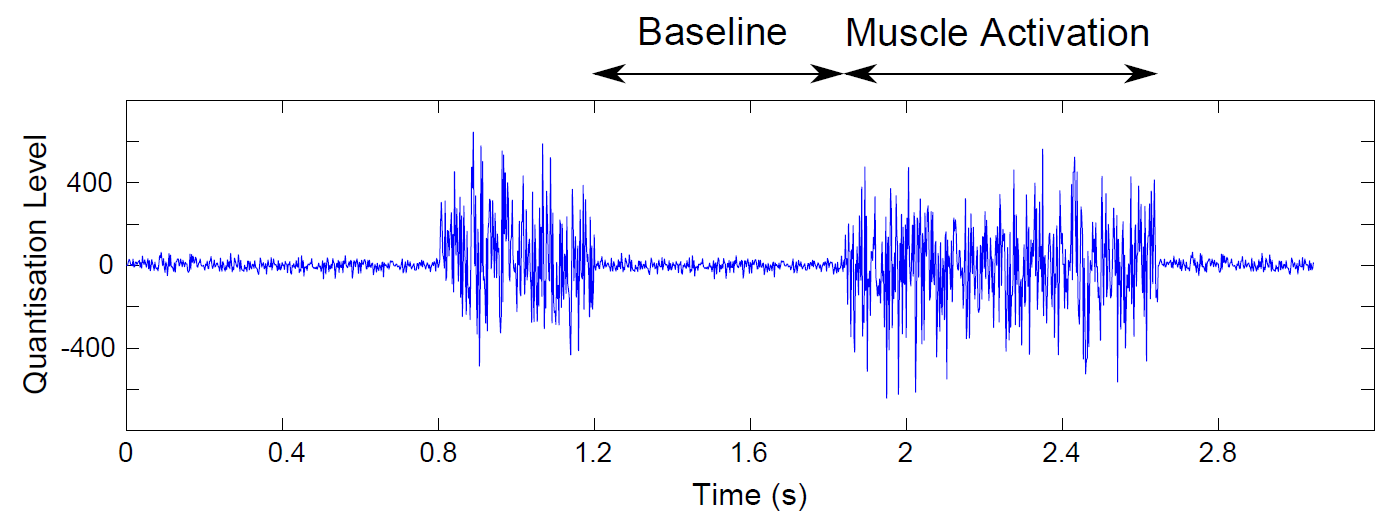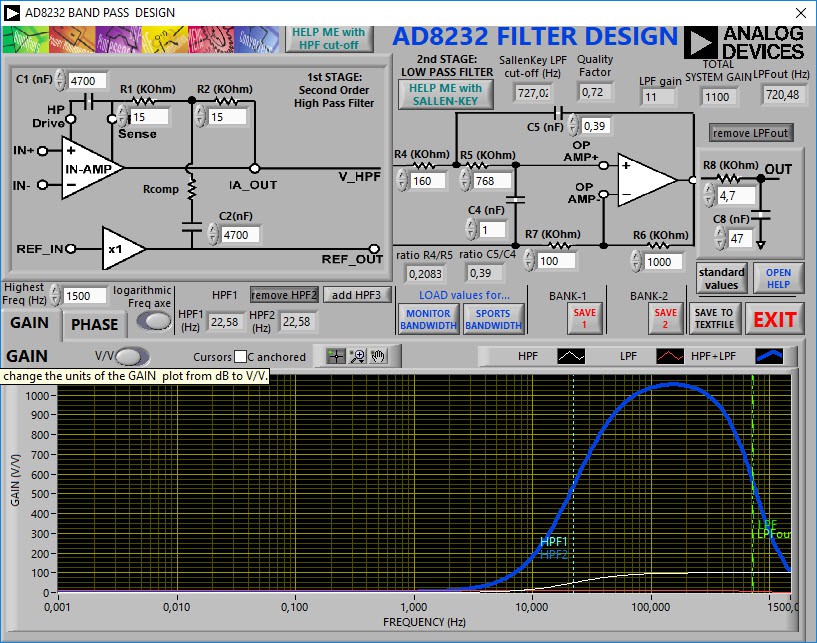"Electromyography (EMG) is an experimental technique concerned with the development, recording and analysis of myoelectric signals. Myoelectric signals are formed by physiological variations in the state of muscle fiber membranes." Basmajian&DeLuca: Muscles Alive

Figure 1. Example of the EMG signal
Besides basic physiological and biomechanical studies, kinesiological EMG is established as an evaluation tool for applied research, physiotherapy/rehabilitation, sports training and interactions of the human body to industrial products and work conditions.
Typical benefits are:
• EMG allows to directly “look” into the muscle
• It allows measurement of muscular performance
• Documents treatment and training regimes
• Helps patients to “find” and train their muscles
• Allows analysis to improve sports activities
Based on these basic aspects, it is of vital importance to include a low cost sensor to achieve the acquisition of EMG signals on the Publys platform. There are various hardware implementations to acquire EMG signals, but mostly they use operational amplifiers with dual power supply.
Since one of the premises of Publys is to build a device that uses a 3.7V battery, I must use integrated circuits that only need a single power supply, so I opted to use the AD8232 to build the EMG sensor.
The EMG signal can be obtained from the motor units of the arm muscles using ordinary EMG surface electrodes. However, the raw EMG signal can not be used immediately, it needs to be processed, it must go through several procedures . To achieve this and deliver a signal that allows at least the movement of a 3D printed prosthetic hand, choose use the AD8232.
Originally, this integrated circuit is designed for the acquisition of ECG (electrocardiograph) signals and heart rate monitoring. By changing certain components, as will be explained later, this circuit can be used in the acquisition of EMG signal since it shows a high degree of signal extraction, amplification and filtration in noisy conditions, which is the main problem of EMG signals. The internal configuration of AD8232 that aids in the process of signal processing is shown in Figure 2. However, the AD8232 can not provide enough filtration for the EMG by itself. For this reason, several passive components are connected to the chip in a way that makes the overall circuit more effective

Figure 2. AD8232 inner configuration
As can be seen in the internal configuration of the AD8232 we can identify some key elements such as: an instrumentation amplifier (IA), a operational amplifier (A1), a right leg drive amplifier (A2) and a reference buffer (A3).
These are the inner connections of the AD8232 chip. The chip must be connected to certain components in order to enable it to perform the required task. The manufacturer suggests a configuration to extract ECG signals, this same configuration can be used to extract EMG signals, but the values of the components must be modified to have different cut-off frequencies than the ECG. Through the AD8232 filter design tool the values of the electronic components were obtained, the figures below show the frequency response.

Figure 3. Gain in V for EMG signal in AD8232

Figure 4. Gain in dB for EMG signal in AD8232
The obtained values will allow to configure the AD8232 as a sensor that allows to extract EMG signals in the range of 20 Hz to 730 Hz. This range was considered because it represents the maximum power of the EMG signal and allows to obtain electronic components with commercial values and easy access. The circuit shown in figure 5 contains the configuration for the EMG sensor.

Figure 5. EMG sensor
After extracting the EMG signal it is necessary to send it to the channel of an ADC to later enter the Atmega328P microcontroller. As an application of the Publys platform, it is expected to be able to use these signals to generate motions in servomotors and to be able to implement 3D prototype prototypes in the future. This is one of the functionalities that Publys proposes in the long term.
 Ever
Ever
Discussions
Become a Hackaday.io Member
Create an account to leave a comment. Already have an account? Log In.
Hi Ever, could you please share the eagle file for the EMG sensor??? thank you very much !!!
Are you sure? yes | no